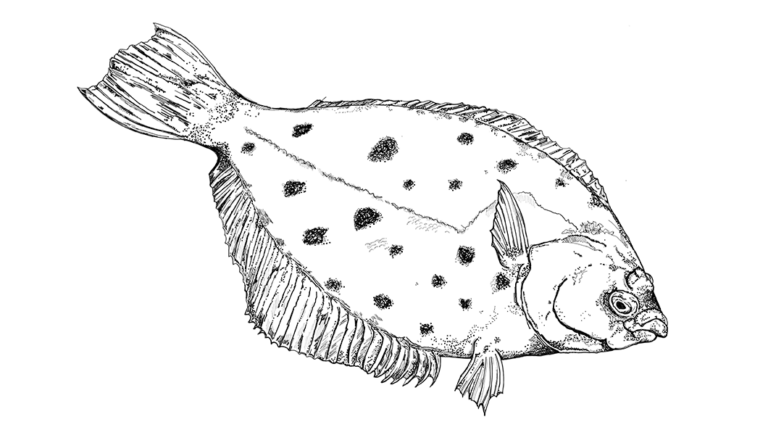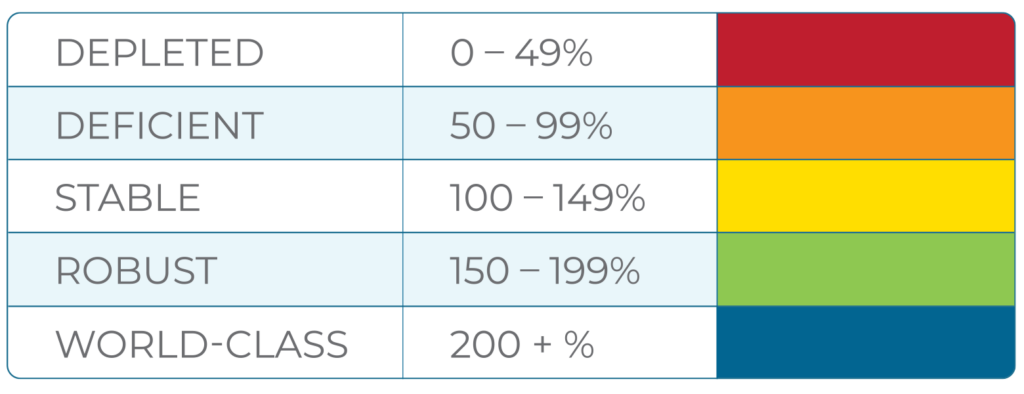Southern Flounder


7.27% = DEPLETED
How It’s Calculated
FINDEX is a novel way to gauge whether the status of a fish population is trending up or down. Management of most fish species in North Carolina is guided by stock assessment models developed by various groups of scientists. The calculations in our FINDEX metric measure the gap between the desired condition of a fish stock (the Target reference value) and the existing condition (the most recent data year in the model called the Terminal value) as determined in each stock assessment. The gaps between Target and Terminal values are reported as ratios.
For example, if the Target and Terminal values are the same, there would be no gap, and the ratio would be 1.0. The multiplier on our FINDEX barometer would set the FINDEX value at 100% in this example and assign a stock status designation of “Stable.” Categories on the FINDEX barometer are measurable as they track the extent of the gap either above or below the “Stable” designation.
For Southern Flounder, the FINDEX gap assessment compared Target and Terminal values of Fishing Mortality (F35%) and Spawning Stock Biomass (SSB35%) from the stock assessment developed by the NC Division of Marine Fisheries. The Terminal year (the most recent data year) in the stock assessment model was 2017.
FINDEX recognizes that Fishing Mortality (lower is better) and Spawning Stock Biomass (higher is better) are inversely related, so we adjust our gap calculations whenever the two ratios are considered together.
Here's the FINDEX formula used for Southern Flounder:

- (0.385 x 0.189) x 100 = 7.27%
- FINDEX = 7.27% for 2017
- 7.27% = DEPLETED

What Does Depleted Mean?
“Depleted” indicates that the stock is severely impaired. Factors contributing to a Depleted FINDEX status include removal rates that are too high, low numbers of spawning females, and poor recruitment over a period of many years.
FINDEX Stock Status Over Time
The stock assessment model for Southern Flounder provides point estimates of Fishing Mortality and Spawning Stock Biomass for each year covered in the data set. We’ve compared the Target reference values to these annual point estimates and calculated the ratios (gaps) for each data year from 1989 to 2017.
Applying the FINDEX gap assessment to the entire time series provides the following stock status trendline:
No Data Found
How Do We Get To World-Class?
FINDEX can also be used to determine when a population has reached “World-Class” status. Because FINDEX factors performance of both Fishing Mortality and Spawning Stock Biomass into the metric, multiple combinations of these values could potentially lead to a World-Class designation.
Southern Flounder Target values for Fishing Mortality (0.35) and Spawning Stock Biomass (5,452 metric tons) have been established by the management agencies. The existing estimates (2017 values) are 0.91 and 1,031 metric tons. Under one potential scenario, if Fishing Mortality was to drop to the Target value, and Spawning Stock Biomass was to increase to 11,000 metric tons, then the FINDEX value would exceed 200% on our barometer. The vision of the NC Marine & Estuary Foundation is to see our coastal stocks exceed Target expectations as we pursue World-Class fisheries and thriving coastal economies.
Commercial Trends
The graph below illustrates commercial trends for Southern Flounder from 1990 through 2022. In 2022, commercial fishers harvested 362,062 pounds of Southern Flounder valued at $928,701. Supporting data was sourced from the North Carolina Department of Environmental Quality.
No Data Found
Recreational Trends
The graph below illustrates recreational trends for Southern Flounder from 1990 through 2022. In 2022, recreational fishers harvested an estimated 70,945 Southern Flounder weighing 166,102 pounds. Supporting data was sourced from the North Carolina Department of Environmental Quality.
No Data Found
State Record
- North Carolina’s state record Flounder was landed at Carolina Beach in 1980 by Harold Auten.
- The fish weighed a whopping 20 pounds, 8 ounces.
Did you know?
- Southern Flounder are considered 100% mature at 22 inches or 3 years.
- They can grow to be as large as 33 inches and live to be 10 years old.
- Catches in North Carolina range from 15-18 inches and 1-2 years.
Harvest Seasons for Southern Flounder
- Check here for proclamations by the Director of the NC Division of Marine Fisheries that specify the commercial and recreational Flounder harvest seasons.
What’s Next?
As our team diligently refines FINDEX, we are committed to delivering the most recent stock status updates for North Carolina’s diverse finfish species. Subscribe below to receive a stream of inshore insights and stay current with our coastal initiatives.

